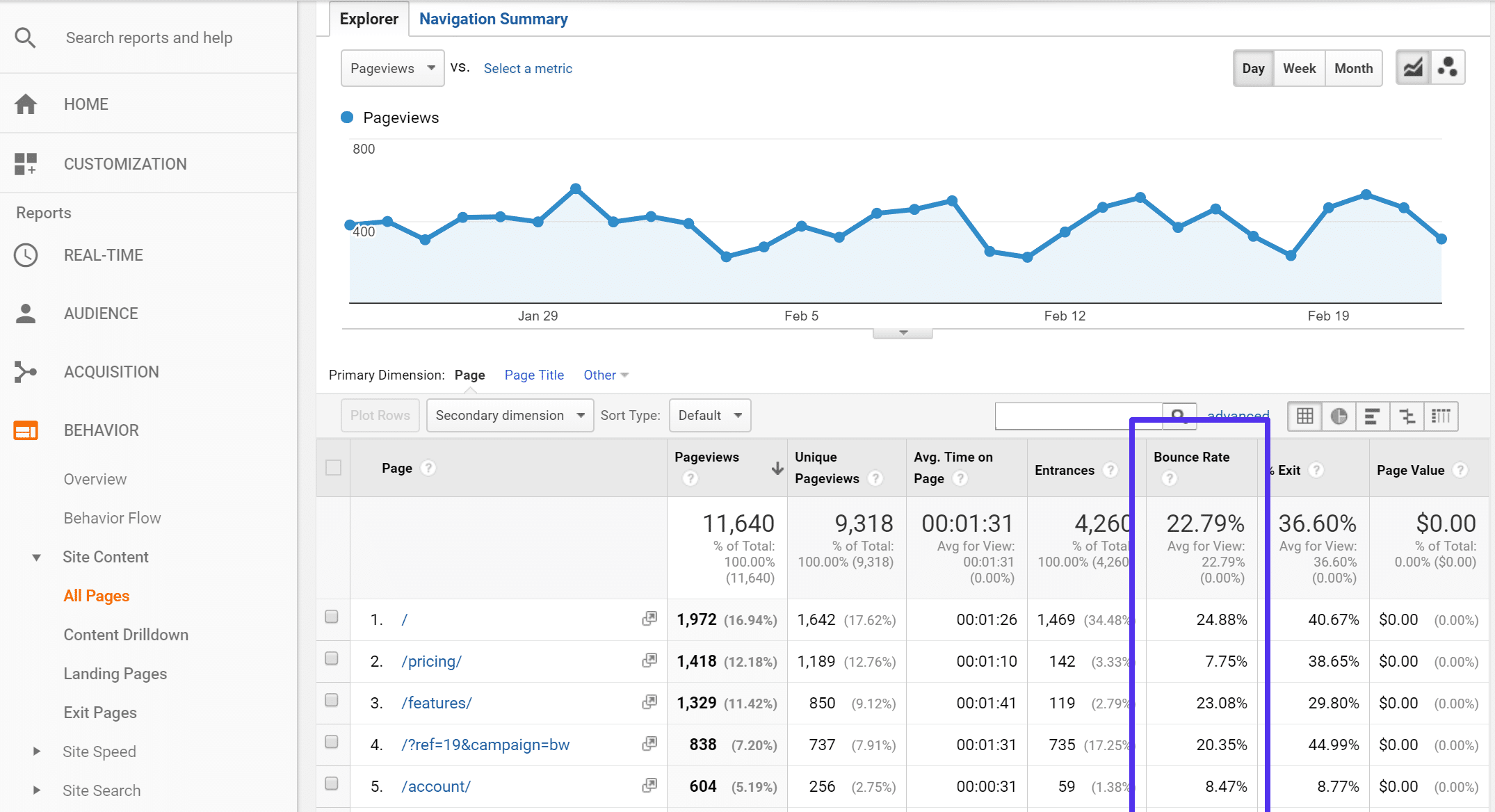The average dwell time for sites in the top ten results of a Google search is 3 minutes and 10 seconds. This metric indicates how effective your website is at converting visitors into buyers—the longer the dwell time, the more likely the customer will find their search intent. And the longer they spend on your website, the more likely they’ll click on the ads you’ve placed.
So if you’re looking to increase dwell time, this article is for you.
Content
- What is dwell time?
- Does dwell time impact how a page is ranked?
- How to calculate dwell time
- Dwell time vs. Other metrics: what’s the difference?
- How improving dwell time increases revenue from ad views
- How to increase dwell time
- Produce longer and better content
- Break content into parts
- Match search intent
- Embed videos
- Enable comments
- Increase your site speed
- Go mobile first
- Conclusion
What is dwell time?
Dwell time is the amount of time from when a user goes to a search result and when they return to the search engine results pages (SERPs). Dwell Time is regarded as an important Google ranking signal by many SEO experts.
Does dwell time impact how a page is ranked?
Google has never made an official statement on whether or not dwell Time affects rankings. However, there have been hints that it is being considered. Nick Frost, the head of Google Brain, was quoted as saying at a 2017 conference: “So when a search was invented, like when Google was invented many years ago, they wrote heuristics that had figured out what the relationship between a search and the best page for that search was. And those heuristics worked pretty well and continue to work pretty well.”
But Google is now integrating machine learning into that process. They’re training models to track when someone clicks on a page and stays on that page or when they go back to the SERPs.
How to calculate dwell time
Dwell time cannot be tracked in Google Analytics, so you’re probably wondering how to calculate it. There is no formula for calculating dwell time. But don’t be discouraged.
The “Average Session Duration” metric in Google Analytics can be used to calculate dwell time; This is the average amount of time a user spends on your site after landing on one of your pages.
Step by step, here’s how you can use it to figure out your average dwell time:
- Go to your Google Analytics account and sign in;
- Select Behavior from the drop-down menu;
- Go to Site Content and select it;
- Select Landing Pages from the drop-down menu;
- Create New Segment and select Organic Traffic;
- Then the Avg. Session Duration appears.
Dwell time vs. Other metrics: what’s the difference?
When discussing dwell time, it’s critical to differentiate between “time on page” and “bounce rate.” Here’s a quick rundown:
• Bounce rate:
The bounce rate is defined as the percentage of single-page sessions on a website. A person returning to the SERPs or closing the page can cause a high bounce rate. It doesn’t matter if they spend one second or one hour on the page; it’s still a bounce. The bounce rate can be calculated on a page-by-page basis or on a site-wide basis. Log into your Google Analytics account and go to Behavior > Site Content > All Pages to find your site’s bounce rate.

• Average time on page:
Simply, the average amount of time someone spends on one of your pages. That user could have arrived at that page via social media, a link on another website, or email.
• Session duration:
It is the amount of time a user spends on a page before moving on to another page. The time spent on a page is calculated using two clicks: the one that brings the user to the page in question and the one that takes them away from it. They may navigate to another page on your website, an external link in your content, or even the SERPs.
• Click-through rate:
Your organic search click-through rate is the percentage of users who clicked on the link to your webpage out of the total number of users who saw that SERP. This is frequently misunderstood or conflated with dwell time. However, this isn’t the case. Dwell time refers to what happens after a user clicks, not to the number of users who click.
• RankBrain:
RankBrain is a system that Google uses to understand better what a search query’s likely user intent is. In its most basic form, RankBrain uses historical search data to make predictions about previously unseen queries.
How improving dwell time increases revenue from ad views:
- A good dwell time often leads to more engagement on your web pages which means users are more likely to interact with ads.
- It also leads to improved reading time which means that it will be possible to place ads below the fold.
- More target traffic remains on your website, which means more potential conversions.
How to increase dwell time
Search engines understand that if a searcher lands on a webpage listed in search results and then quickly returns to the search results, the searcher is more likely to blame the search engine. When that pattern occurs several times, it simply adds to a searcher’s frustration with the engine, so it’s a pattern that search engines would prefer to avoid whenever possible.
Understanding the meaning of dwell time and how to calculate it is only half the battle. Here are some suggestions for improving SEO rankings by increasing dwell time.
1. Produce longer and better content
It seems reasonable to assume that people will have to spend more time reading it if you add more content to the page. As a result, the amount of time exhausted on a page in SEO increases. To be considered long-form, a piece of content must typically be at least 2,000 words long.
It ranks #1 for highly competitive keywords due to its thorough content, and readers spend an average of over 4 minutes on the page. Of course, it’s not just about the quantity.
Quality is also important. Your users will quickly click away after reading one or two paragraphs of poor content. As a result, your search engine rankings may suffer. Each introduction must be interesting and relevant to your target keywords to encourage dwell time.
2. Break content into parts
Header tags (H2 & H3) can be used to divide content into sections and make it easier to read. It also makes it easier for people to refer back to your content in the future.
Turning lists into bullet-point format is another way to make your content easier to consume. It makes the content easier to read and helps users quickly locate the point of the content.
Using a lot of screenshots and other visuals to illustrate your points is another way to engage readers. Aside from using headings and subheadings to break up the content, there are a few other things to do to make a page more accessible:
- Browser compatibility: Run your site through Safari, Firefox, Chrome, and Opera to see if it works.
- Clear navigation bars will make it easier for users to find search intent. If you have a large website with many pages, a drop-down menu may be preferable.
- Clean code: The backend is where a great user experience begins. The mark-up must be valid, and the source code must be minimal.
3. Match search intent
If you want to rank #1 on Google for a keyword, you need to be the most relevant result for a query. To put it another way, the content on your page should reflect the searcher’s intent or the reason for the search. Google has a database of the most relevant results based on millions of searchers who have bounced or stayed on pages.
Here are the four most common types of search intent:
- Informational: A searcher is looking for broad information or a specific answer to a question.
- Commercial: In a commercial search, users express interest in a product or service while still researching and weighing their options.
- Brand: The user is looking for a specific website or brand. They may forget the URL or find it easier to Google a brand than to type it in.
- Transactional: The searcher in a transaction search is ready to buy. They are either looking for the best deal for a specific product or service.
4. Embed videos
Using videos to supplement written content is a great way to keep a wide range of users interested. While some people prefer text over video, others may prefer to watch a video. Furthermore, because a video usually lasts at least a minute or two, visitors who watch the entire video are automatically kept on the page.
Here are a few methods for increasing the dwell time with video:
- Use a visually appealing video thumbnail to entice users to click and watch.
- Customer testimonial videos and product videos can be effective conversion boosters.
- Include a video that explains a specific strategy or concept in your content.
5. Enable comments
Allow comments on your content. Users will be more engaged with your website to read more comments, and they will stay online longer. Trolls are no longer the only ones who use comment sections.
People are interested in reading what others have to say. Other readers are likely to have related questions and may provide additional useful responses from the author. People’s dwell time increases as they read or add their own comments.
However, don’t just open the comments and walk away. Regularly check-in and respond to users to encourage more interaction. It is also safer to use third-party services to integrate comments to block spam and fake traffic.
6. Increase your site speed
Making sure your pages load quickly is an important part of making a good first impression and preventing people from leaving your site. People will click away before reading the first word if the site takes too long to load. That is why you must make sure that all critical web pages are PageSpeed optimized.
7. Go mobile first
An unresponsive website is a surefire way to keep your dwell time on mobile devices to a bare minimum. A mobile-friendly version of every website should be available. Because mobile devices account for more than half of all internet traffic, you must make your website mobile-friendly.
Conclusion
You can test each strategy in the list separately and track which users will react best: elements of interactive content, infographics, videos, or content broken into pieces. Once you understand what works best to increase traffic and dwell time, you can take that specific strategy as the main one.
